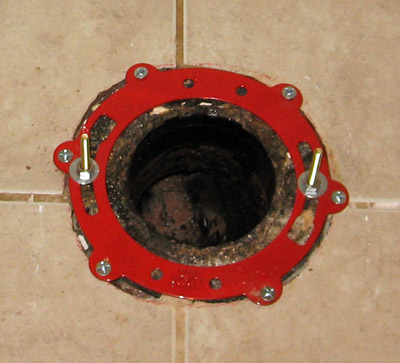mnpsacks said:
and when screwing the toilet down the threads striped on the toilet flange.
Darn, all I get is checked ones. (Sorry, couldn't resist.)
Typically, a closet bolt is made from brass, has a large head that rests below a slit in the flange - whether a short slit on each side, or a longer slit that allows the bolt to be slid around to position. The bolts are not an integral part of the flange.
There are also plastic closet bolts which also have a large plastic head.
So, unless the flange itself is broken, it does not need to be replaced.
In some very old installations, bolts were actually threaded into holes in the cast iron flange. In a case like that, I'd drill the remainder of the bolt out with a smaller drill so as to not destroy the threads in the flange, use an easy-out to remove the remainder, and screw in a new brass bolt without the head.


